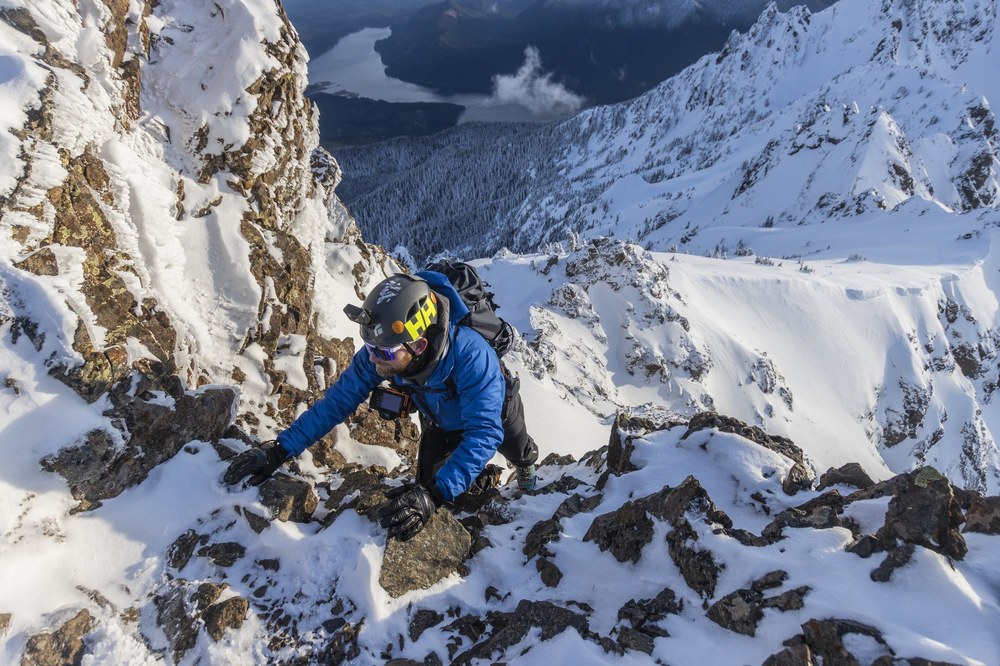
I always wondered what it would feel like to be in snow in the middle of August.
Growing up in the flatlands of the Midwest, I would stare at National Geographic magazines and marvel at the mountainous giants in photos. I could not wrap my young mind around the thought of a place so high up that it had snow year-round; how was that possible? Sitting in the 100-degree heat of the Midwest summer, it sounded pretty good to me.
I may not have known the mountains, but I knew that I felt drawn to them. It was like I could feel a force pulling me towards their craggy, snow filled peaks.
The Front Range
I wouldn’t come to meet the landscapes of my dreams until I reached adulthood. When I was 18 years old, and fresh out of Army Basic Training, I scored the jackpot of assignments for my first duty station: Fort Carson, Colorado.
I drove west across the prairie, and I vividly remember first seeing signs of what lay ahead, so small against the horizon. The bumps grew bigger and bigger until my entire field of view was filled with the Front Range of Colorado. I could hardly contain my excitement, which my Platoon Sergeant squashed the moment I arrived. Upon learning I couldn’t wait to get out into the mountains, he laughed and said, “Yeah, it’s going to be awhile before you can do that. On that note, don’t even bother unpacking your bags.” Just a few weeks later I was on a plane to Iraq.
I had come so close.
For the four years I was stationed in Colorado, I spent most of that time in Iraq and Afghanistan. I never got to experience the Front Range like I wanted to – they were always slightly out of reach. Just when I started to get back into them, it was always time to leave again. This frustrating pattern continued until I came home from my second deployment in Afghanistan, at which time I was swiftly relocated to Fort Riley, Kansas.
Banished back to the prairie, go figure.
While in Afghanistan on yet another deployment in 2012, my contract with the Army was coming to an end. I told the career counselor that I would sign another one, but only if they sent me to a mountain state. In exchange for five more years of service, I was offered an assignment at Joint Base Lewis-McChord, Washington. I signed on the dotted line, raised my hand to renew my oath to the constitution, and began dreaming of the mountains once again.
Rainier, Olympics, and North Cascades
I arrived in Washington in 2013 and hit the ground running; I did not want a repeat of Colorado. I started hiking right away, exploring the well-known and fairly short trails at first, then slowly diving deeper into the forest and exploring higher and higher elevations. I started eyeballing bigger and more challenging looking peaks. How can I get to the top of those, I wondered? I set about doing some research and found the Olympia Branch of The Mountaineers.
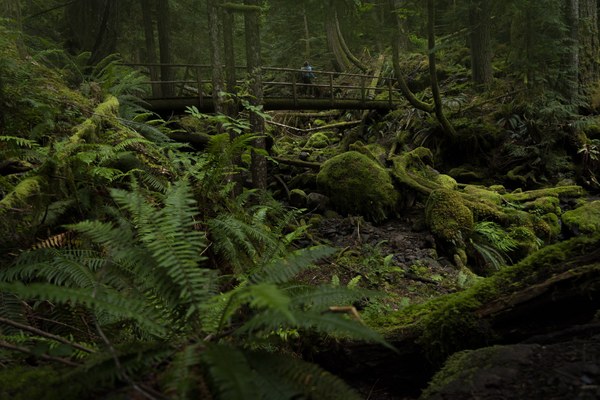 A classic lush green valley in the Olympic Rainforest. Photo by Nate Brown.
A classic lush green valley in the Olympic Rainforest. Photo by Nate Brown.
I enrolled in Basic Alpine Climbing to ramp up my outdoor education and experience. I learned the basics of glacier travel technique, alpine climbing, wilderness navigation, mountaineering-oriented first aid, and other essential outdoors skills. I also met some of my best friends, and we continued to learn and grow with each other well beyond the end of that year.
My education did not stop there. A flatlander, I grew up without any knowledge about skiing or anything else mountain-related in the winter. I took myself to the bunny slopes of the local ski resorts to teach myself to ski. I enrolled in AIARE I so I could learn to identify avalanche terrain and how much I really, really want to avoid it. I took a backcountry skiing course through the Olympia Mountaineers so I could experience the joy of skiing down a snowy summit I had just climbed. Around this time I also bought my first camera, a small point and shoot, and learned how to operate it manually so I could try to get better photos of the amazing areas where I was spending so much of my time.
I kept developing and honing all these skill sets, getting more comfortable both in the outdoors and behind the lens. I was completely immersed and dedicated to learning and improving. Every so often a friend would ask me a pretty simple question, “What’s your goal here? What are you trying to accomplish?” And I really didn’t know. Typically I’d just shrug my shoulders and say I was having fun and that was all I needed.
But I was pursuing something, even if I wasn’t aware of it yet.
A special connection
The Olympic peninsula and I have a special connection.
When I arrived in the Pacific Northwest in 2013, I found an apartment to rent in Olympia because it was near my base and appeared to be in a great city. Two weeks later I found myself with an extended four-day weekend for a holiday. I thought a cool way to check out my new home would be to take a road trip on Highway 101, which runs in a loop around the peninsula. The stunning beauty I witnessed during that long weekend is when I first began to fall in love with the PNW. The stark contrast of lush rainforest, the snowy alpine mountain areas, and the coastline with its epic sea stacks was overwhelming and intoxicating. I had never experienced such a variety of beautiful terrain in my life, and all in just four days! I was hooked.
The allure of the Olympic Mountains for me is specific: its peaks seem to go on endlessly into the interior of the peninsula, offering only a glimpse of what lies beyond. Therein lies one of the unique challenges in even reaching them in the first place. Unlike your typical mountain range with roads crossing and winding their way through a linear progression of peaks, the Olympics are a circular cluster of mountains, with no road access through them. The closest most people ever come to seeing the interior is from one of the many viewpoints on the edges, like the gorgeous panoramic view from the Hurricane Ridge Visitor Center. Standing at one of these overlooks, scanning over the countless mountain ridges and river valleys of the interior, it looks so close - yet remote and wild. The Olympic Mountains truly invoke a sense of mystery and remote wilderness, and I wanted to experience their grandeur and see for myself what it’s like from the inside.
I wanted to climb enough mountains in the Olympics to say that I had truly seen this incredible range.
But how to do it?
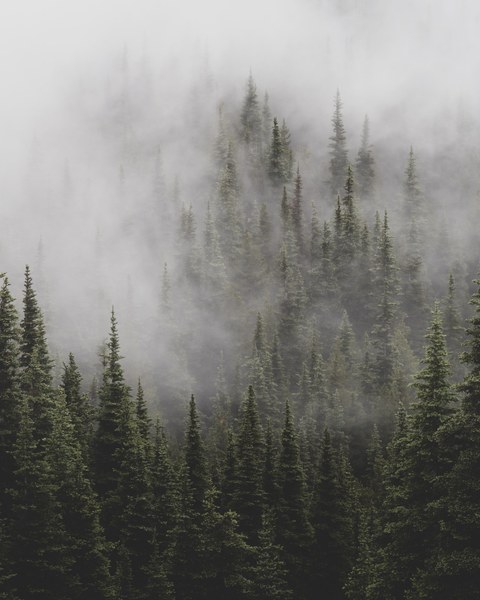 Fog rolling through the Olympics. Photo by Nate Brown.
Fog rolling through the Olympics. Photo by Nate Brown.
The Olympic Mountain Project
After a ton of planning and scrutiny, I created a list of 30 mountains that both highlight the diversity of the range and cover the most ground, serving my purpose of seeing as much of the Olympics as I can.
I knew from the start that I was not interested in including only the tallest or most technically challenging mountains. I wanted to spread out the peaks enough that it would cover every part of the Olympic mountain areas without too much overlap. The tallest mountains in the Olympics are generally in the same area, meaning I wouldn’t get to explore nearly as much as I want. I’m also not the best alpinist, so technically challenging peaks hold little appeal. If there is an easy way and a hard way up a mountain, most of the time I will happily take the easy route.
Many of the thirty mountains are so remote that they require an expensive entry ticket in the form of a 20-50 mile hike to get in and out of the area, not including the climb to the top. With my knees and back already upset with me for the camera gear, I’ll happily leave the rope at home if I can.
I would like to complete the project within three years, but being smart and safe are my top priorities, because speed can so often lead to poor choices.
Given the level of commitment, I had anticipated many challenges: the weather, seasonal availability of the mountain interior, my "normal life" requirements outside of the mountains, and the availability of climbing partners. I’ll admit, I had never thought a global pandemic would be a challenge as well, but it is the reality we face. With the stay-at-home order for Washington state and a closed National Park, I watched as all of my meticulously thought out plans for 2020 evaporated into thin air.
But, distance makes the heart grow fonder.
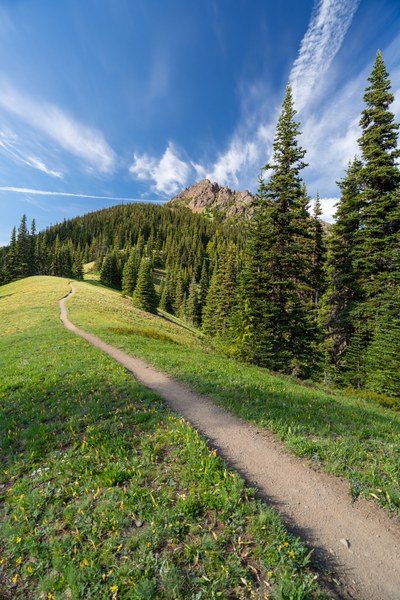 An alpine ridge trail near Hurricane Ridge in summer. Photo by Nate Brown.
An alpine ridge trail near Hurricane Ridge in summer. Photo by Nate Brown.
10 down, 20 to go
I began the Olympic Mountain Project in June 2019. A little over one year into this multi-year effort I have completed 12 unique peaks, with one bonus peak that I completed in both the summer and winter. I hope to do this same thing with several of the peaks on the project; the difference between summer and winter is shocking, and really gives me an appreciation for the power of what a few months’ difference can make in the mountains.
In total, I’ve hiked 207 miles and climbed over 62,000 feet in 20 days and nine nights. I could also estimate the number of gummi bears consumed during all those miles, but I sort of don’t want to know. Let’s just say it’s a lot.
Most of the 10 peaks are on the outskirts of the range and relatively low in mileage, apart from Sentinel Peak, which was a 46-mile trip by itself. The summit holding the record for most feet climbed is Henderson Peak, which required nearly 12,000 feet of gain, due to a very circuitous route which took me up and over several mountains, then back over those same peaks on the way out. I earned my post-climb meal that weekend, without a doubt!
If I had to pick a favorite out of the bunch so far, it would probably be my winter climb of Mount Washington with a bonus traverse to Mount Ellinor. A winter summit of that beautiful peak was already high on my list, even prior to the project.
Looking Ahead
As of late June the Olympic National Park is still closed to backcountry camping, but National Forest lands recently began reopening! I am finally free to plan trips within the Forest land, such as my two most recent summits of The Brothers and Lightning Peak. However, since most of the remaining summits are within the National Park and require at least one night spent in the park, the project is on hold until everything is open. I am hopeful that I will have the opportunity to attempt several more peaks this summer, and I have tentative dates scheduled for Mount Deception and Mount Constance!
Even with all of the uncertainty that 2020 has brought, something I do know is that I will get back out there eventually. A whole childhood spent dreaming of craggy summits and mountain layers – and all those years I was so close, yet so far from the mountains – gave me two amazing gifts that have proven invaluable: patience and perspective. The pursuit of happiness and mountains is a lifelong dream of mine.
They are worth the wait.
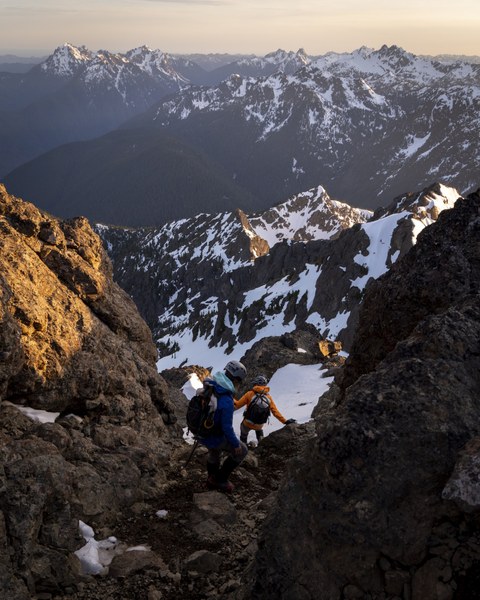 Springtime descent of The Brothers. Photo by Nate Brown.
Springtime descent of The Brothers. Photo by Nate Brown.
Giving back
Climbing these peaks to see them for my own enjoyment does not seem like enough. I want to use my photography skills to both document the journey and use it to shine a light on these rarely-seen areas of the Olympics to highlight their fragility and beauty. I also want to help give back to the National Park that has meant so much to me.
So I decided to partner with Washington’s National Park Fund as the official philanthropic partner of Washington State's National Parks, which includes the Mount Rainier, North Cascades, and Olympic National Parks, all which I love dearly. WNPF does incredible work for parks, like helping fund research and park maintenance to make up for the lack of funding we all know the National Parks face. To help support them and give back to the area I love, I donate 25% of the proceeds earned from all Olympic photography prints purchased on my website.
To follow Nate’s Olympic Mountain Project and see more of his stunning alpine adventure photography, visit natebbrown.com. Nate also wrote a story for us in our Summer 2019 Mountaineer, DIY Gear Room. Take a look for tips and tricks to turn your gear dungeon into a haven of organization.
This article originally appeared in our Fall 2020 issue of Mountaineer Magazine. To view the original article in magazine form and read more stories from our publication, visit our magazine archive.
 Nathaniel Brown
Nathaniel Brown